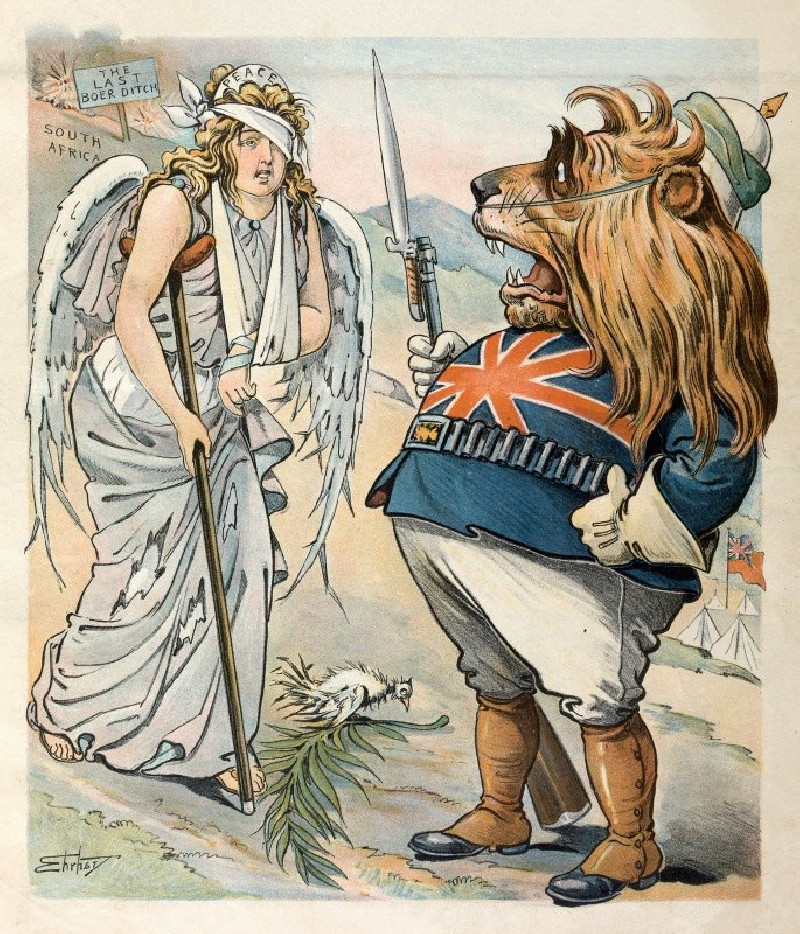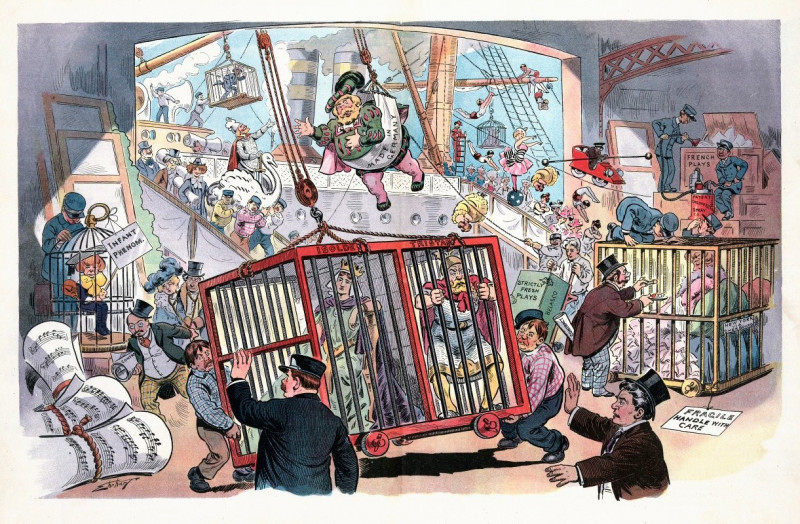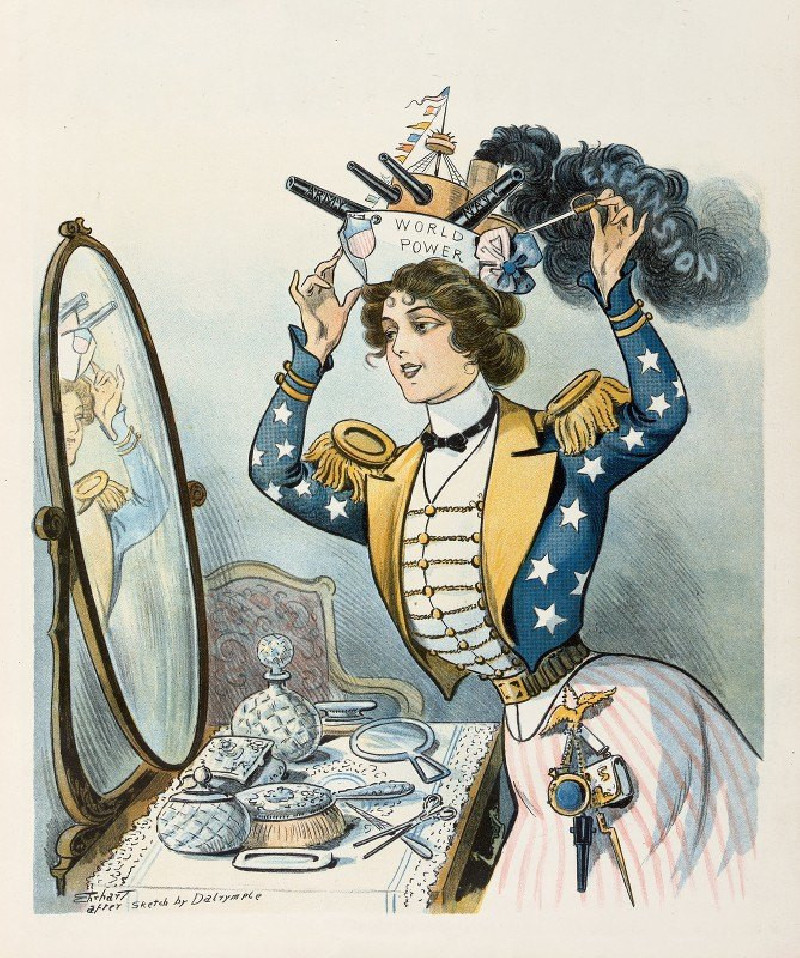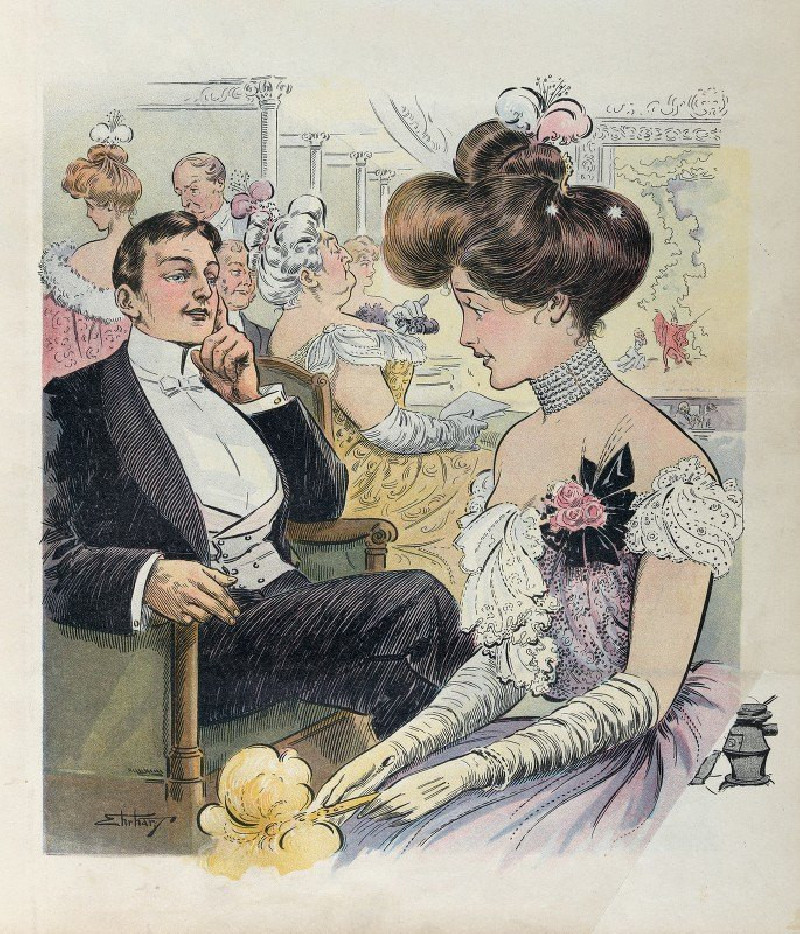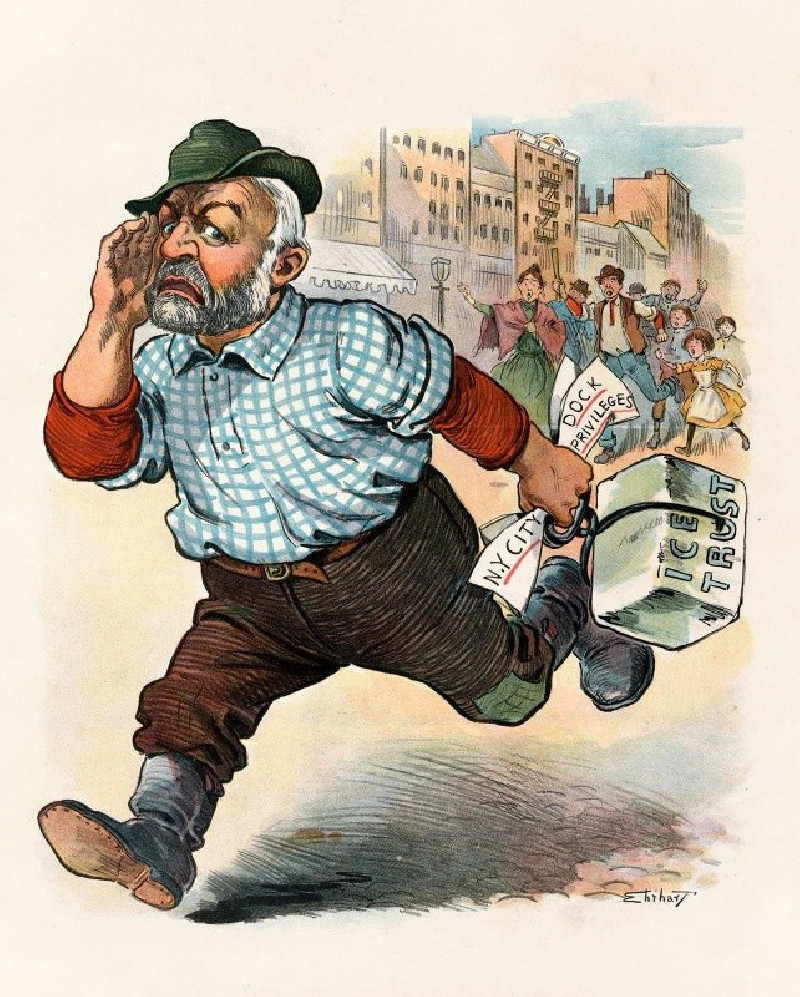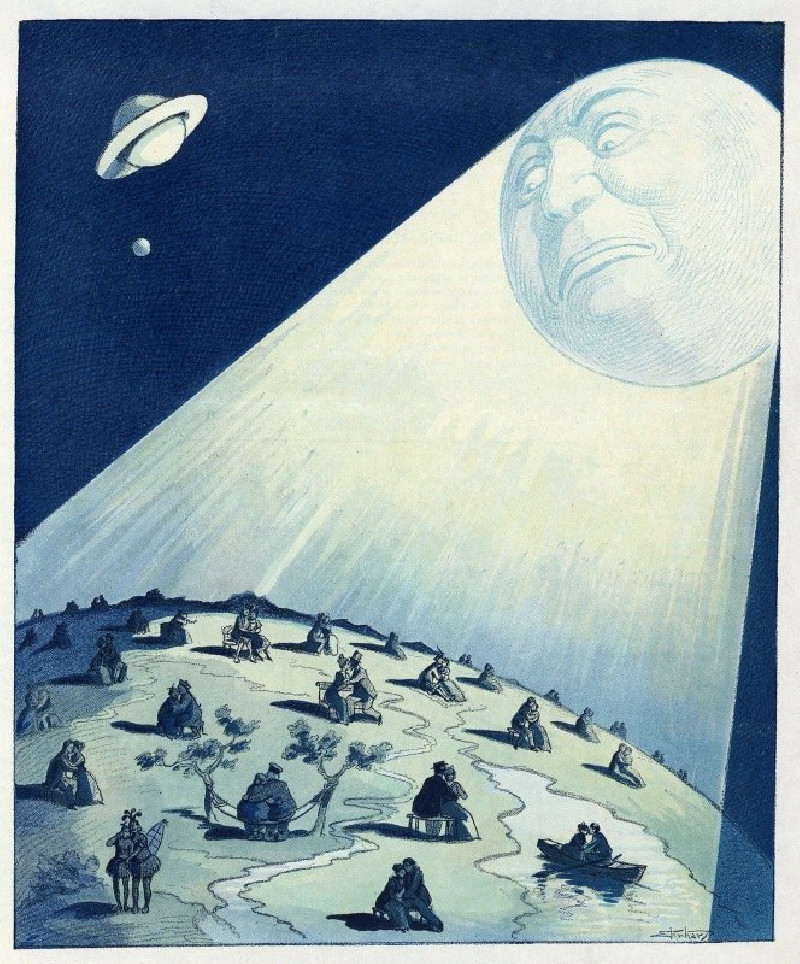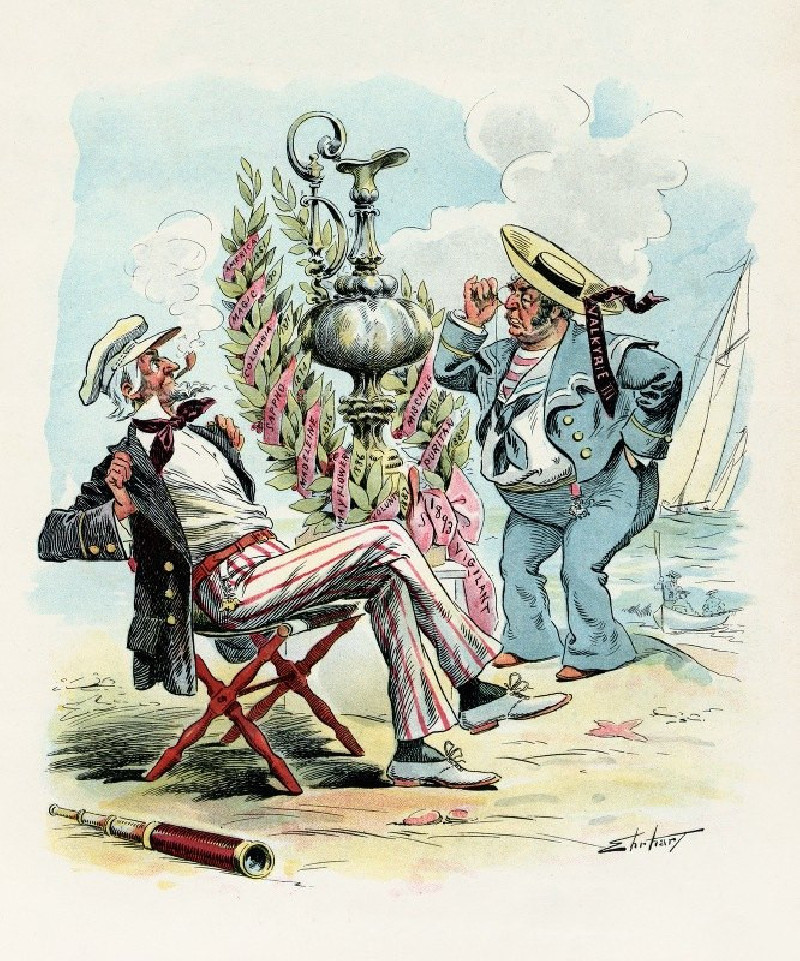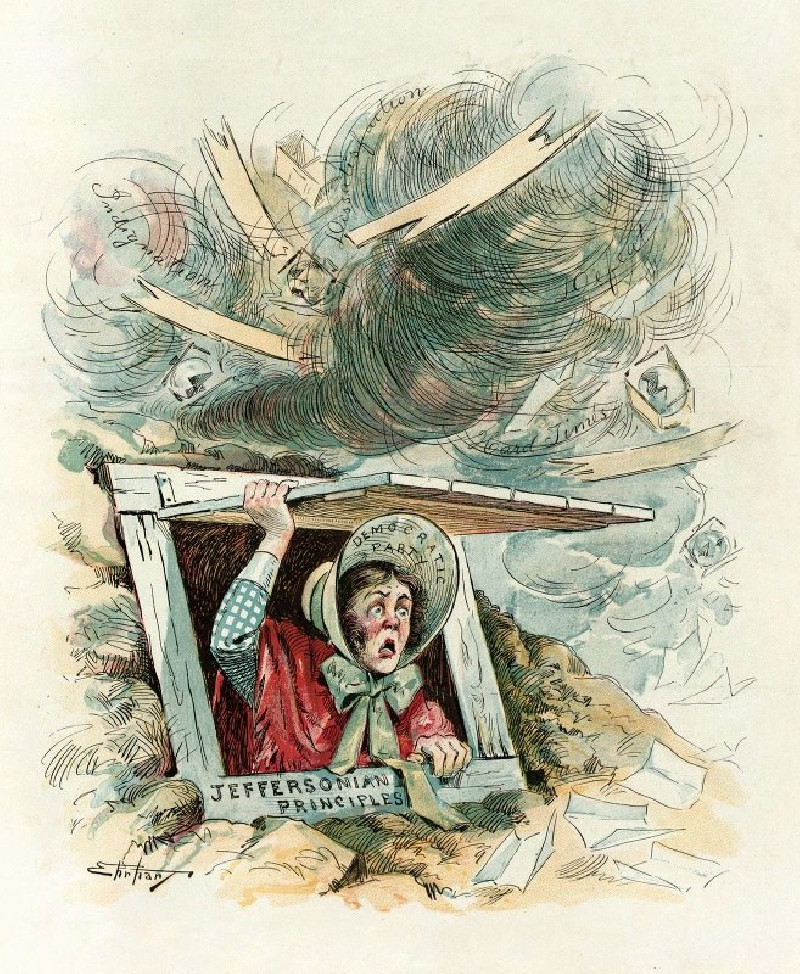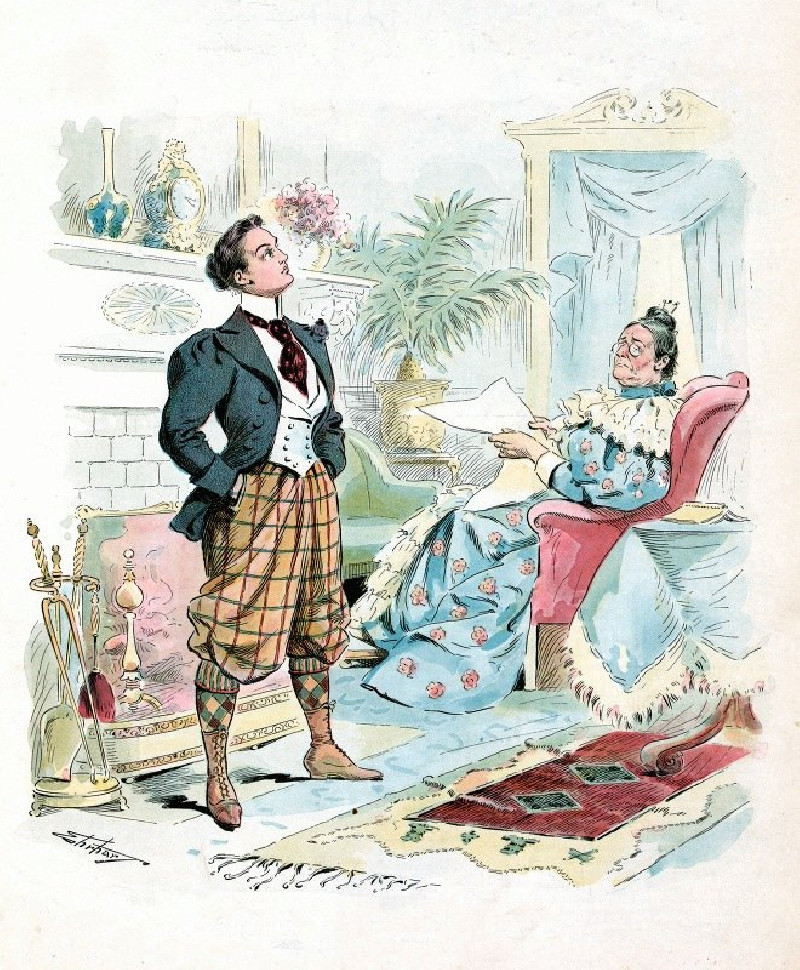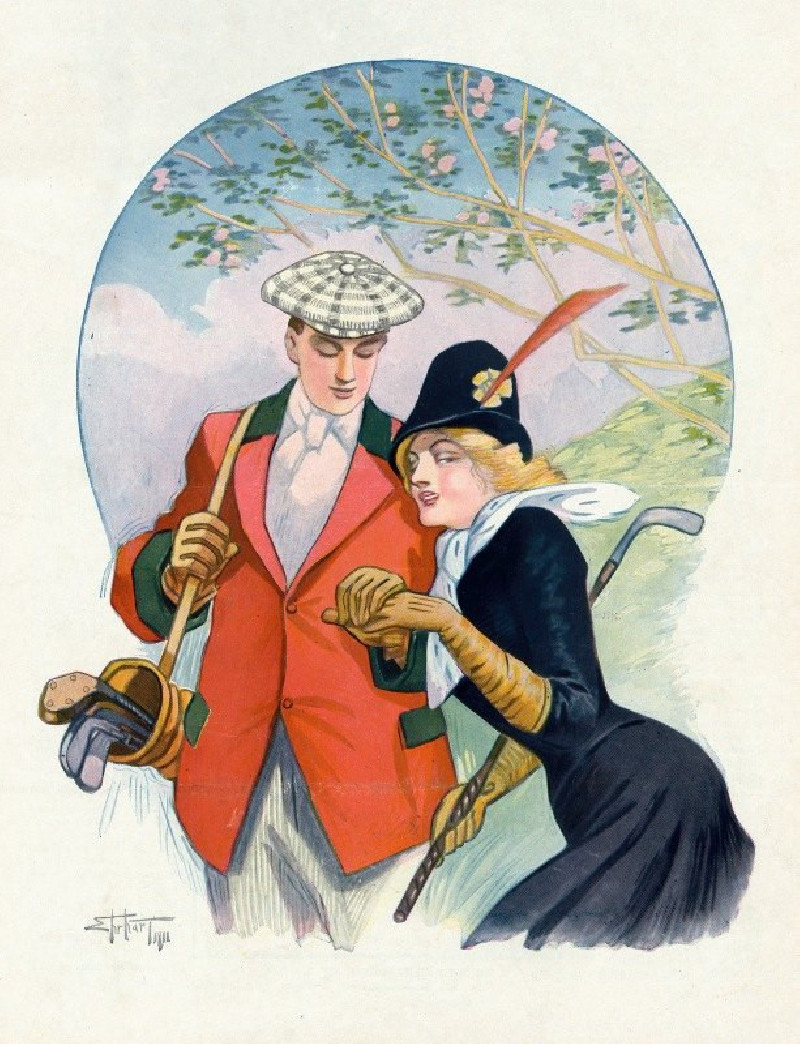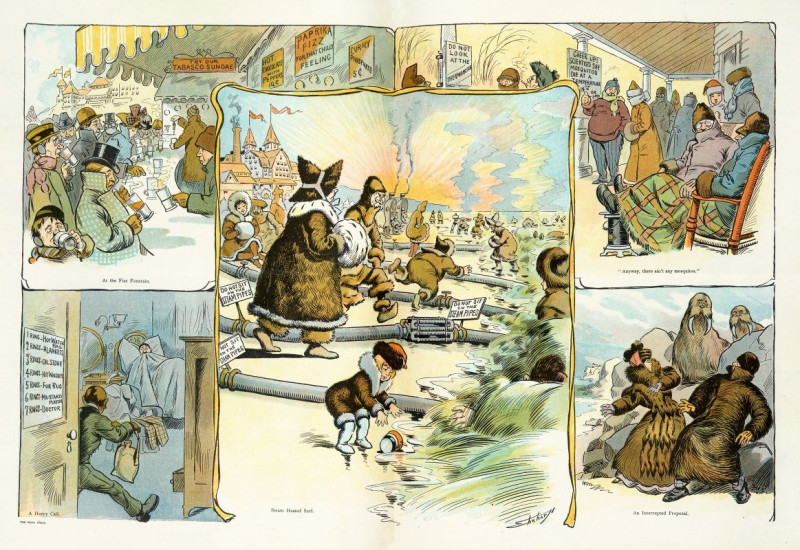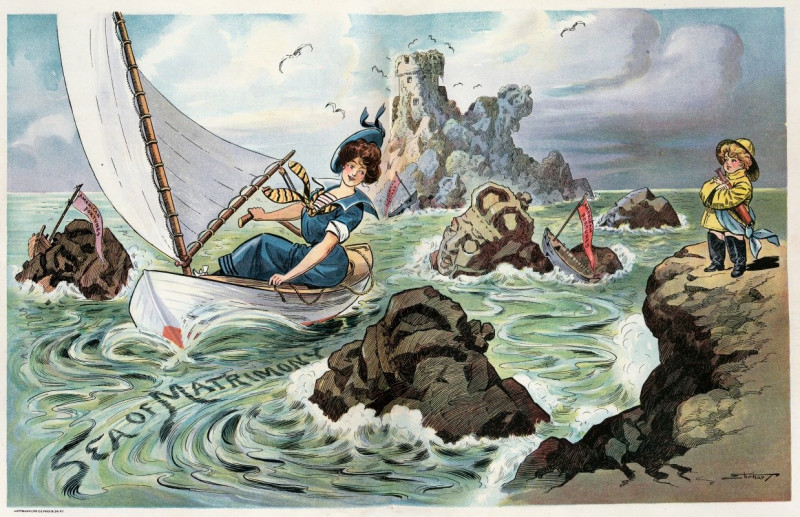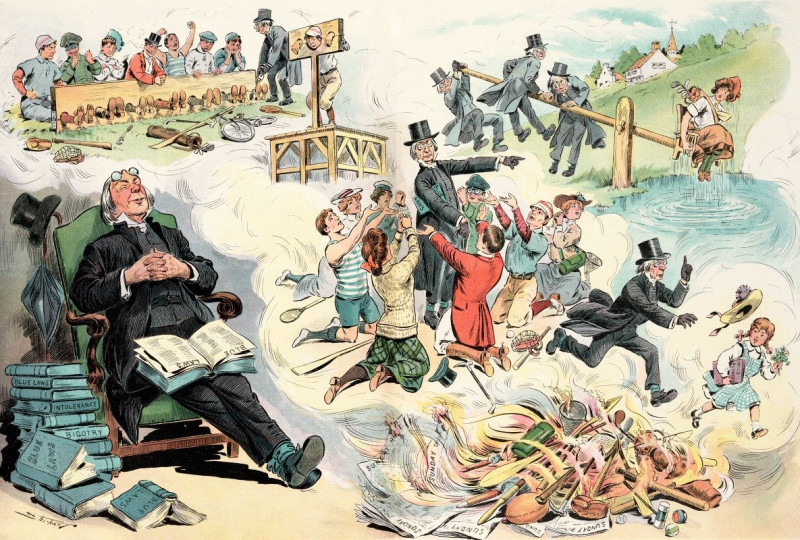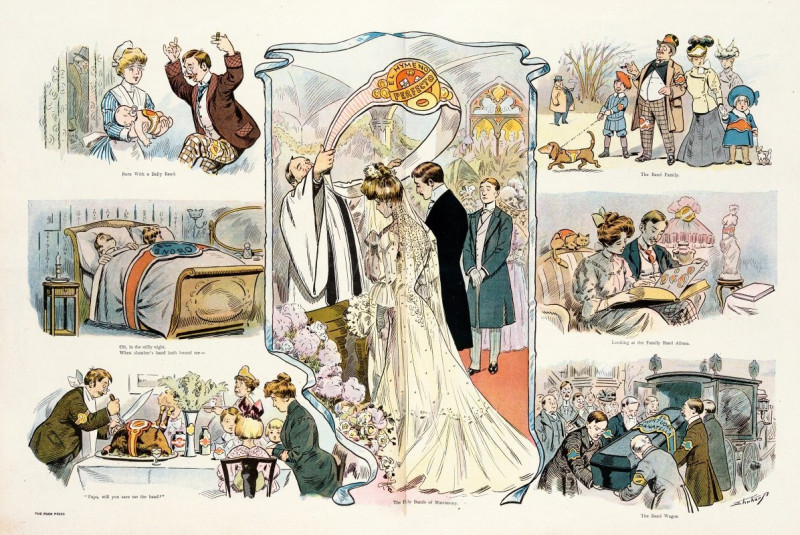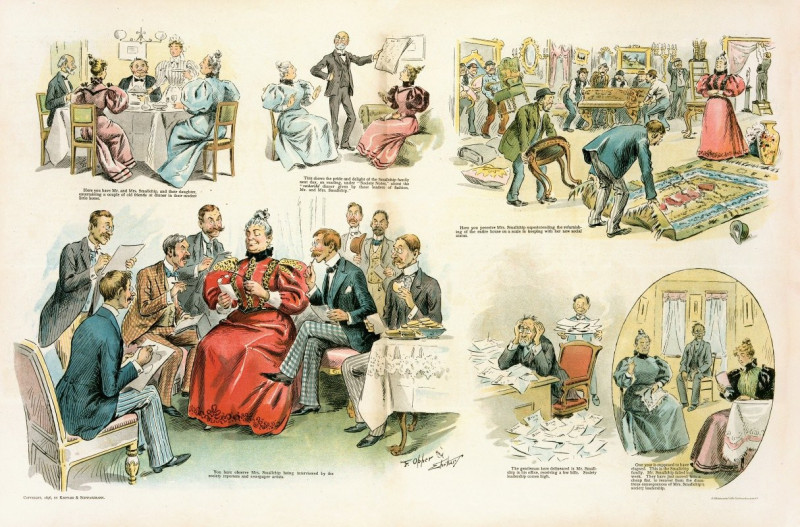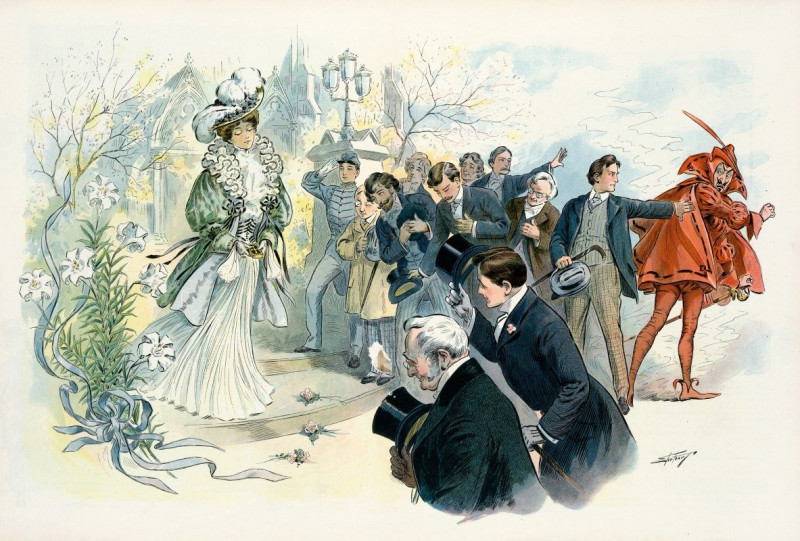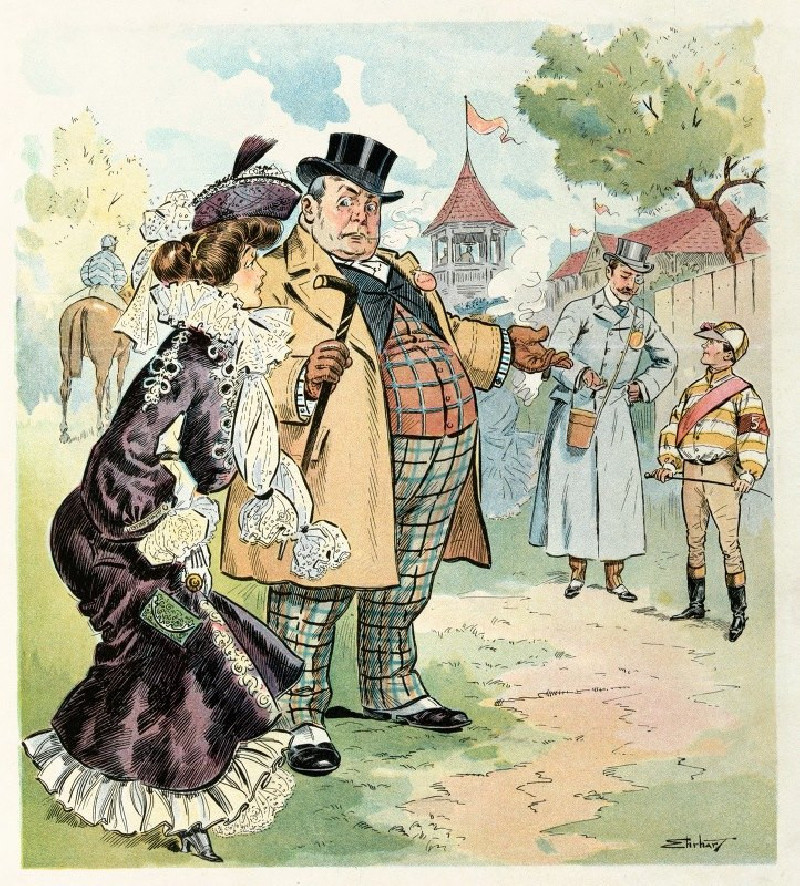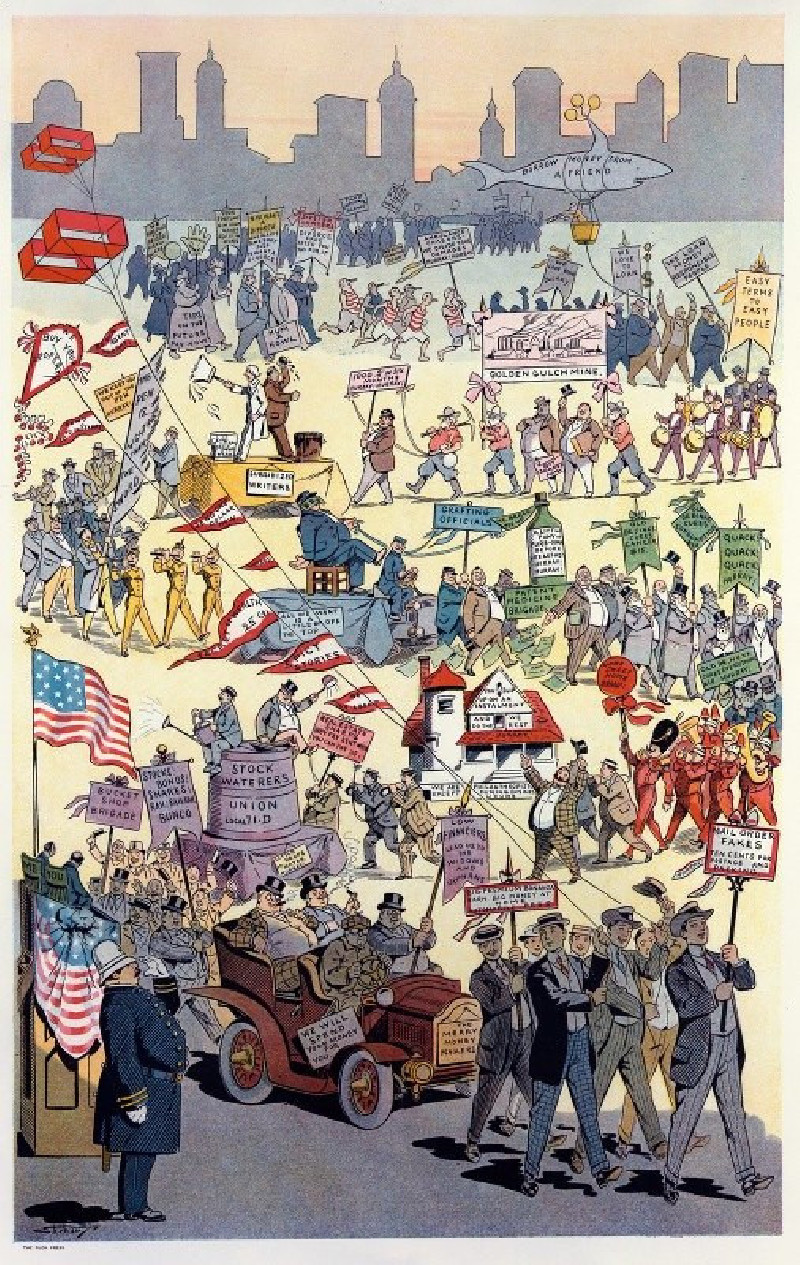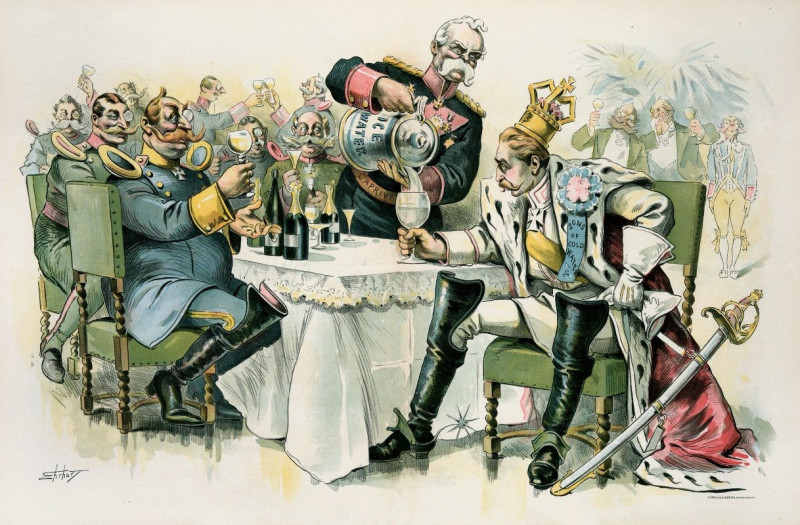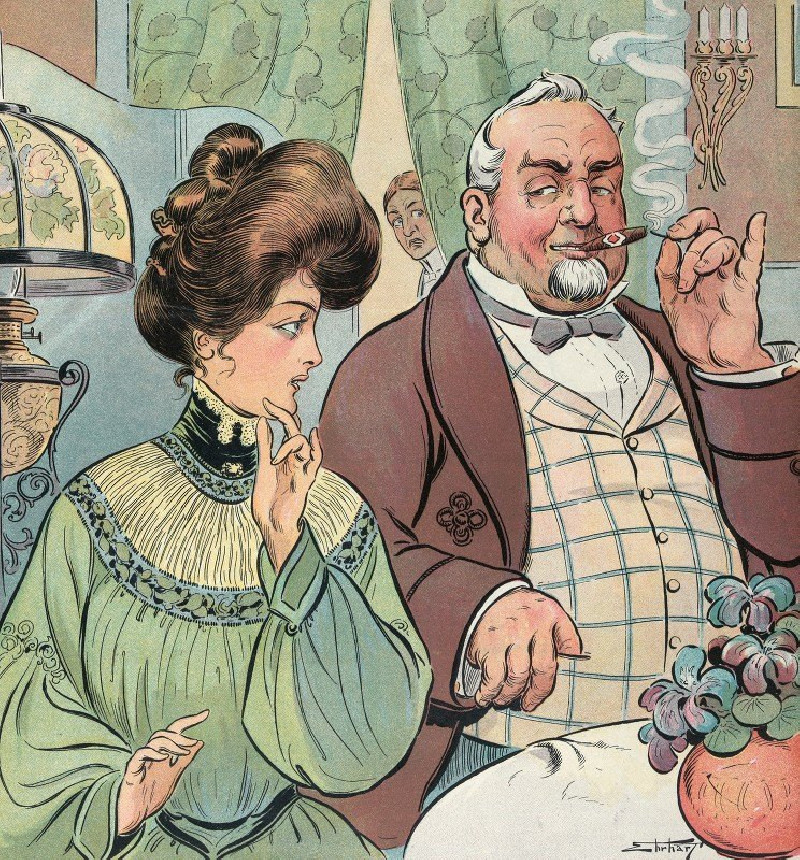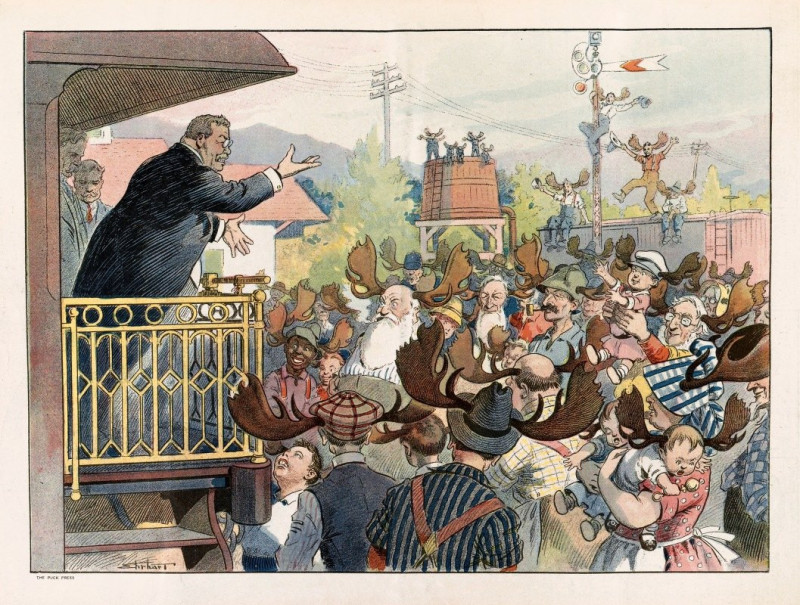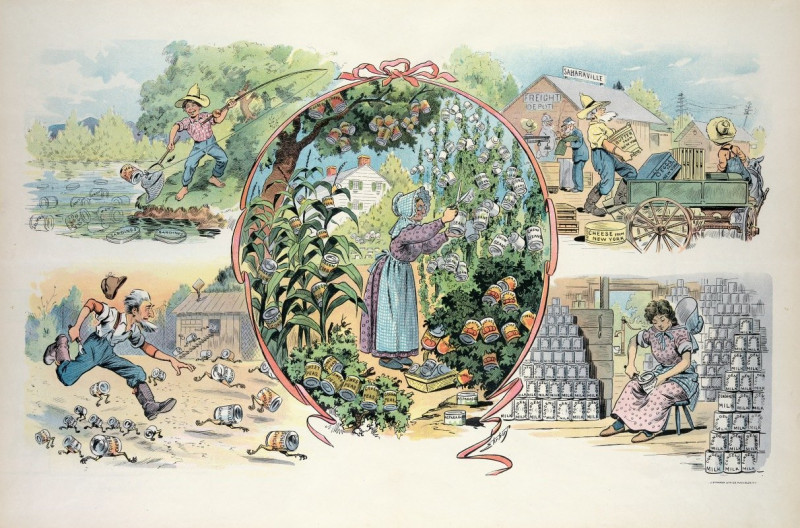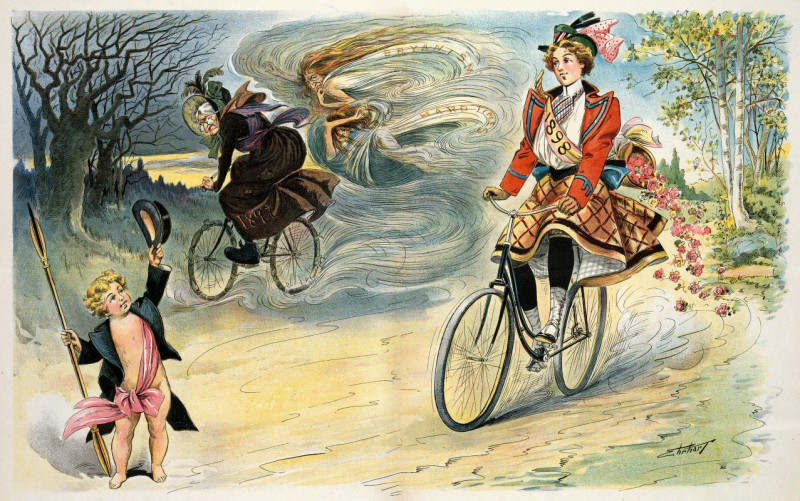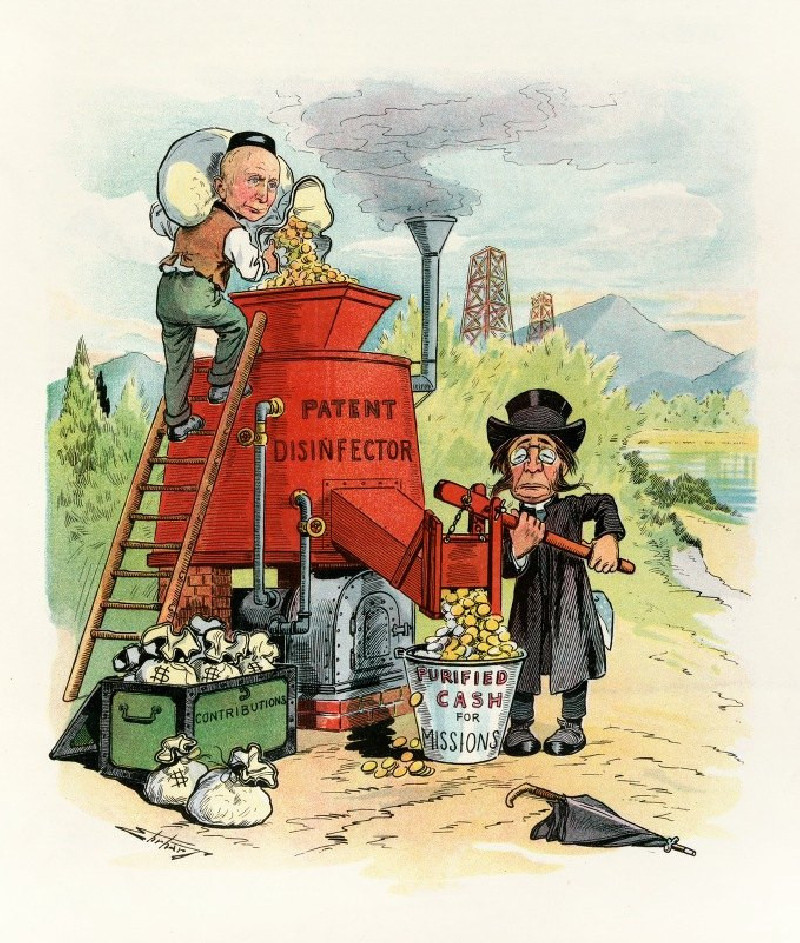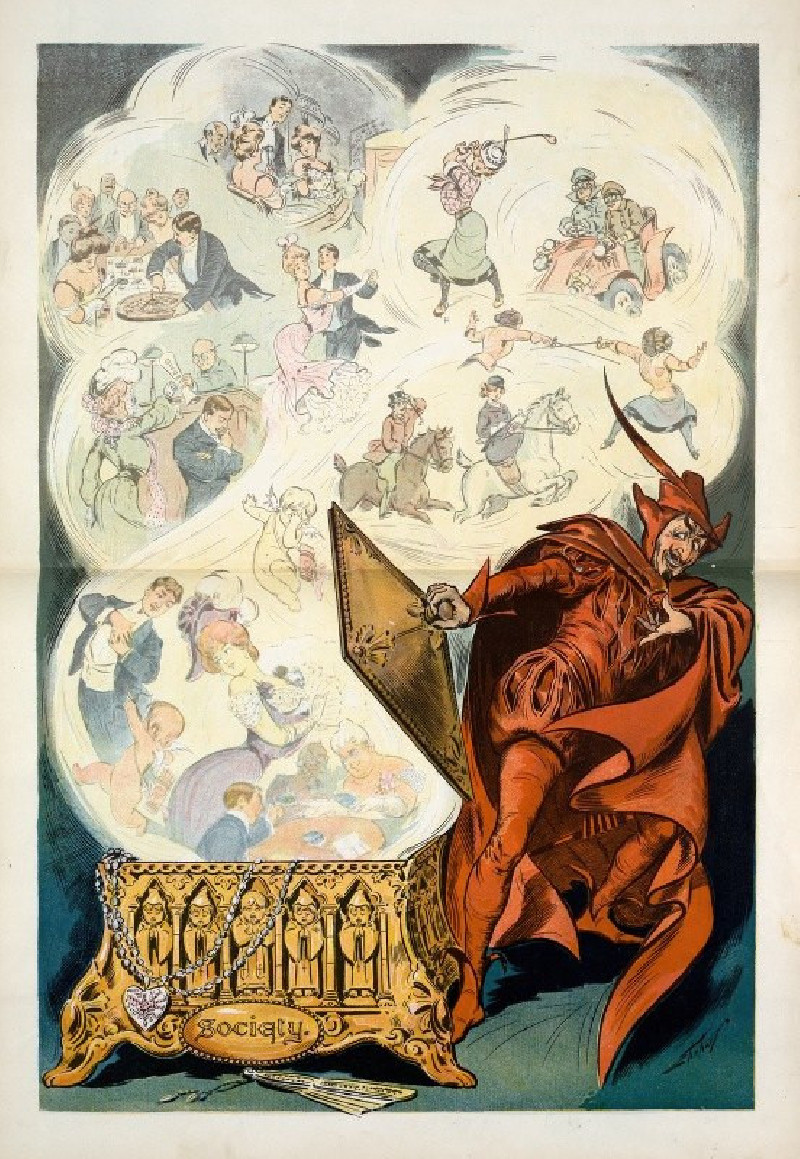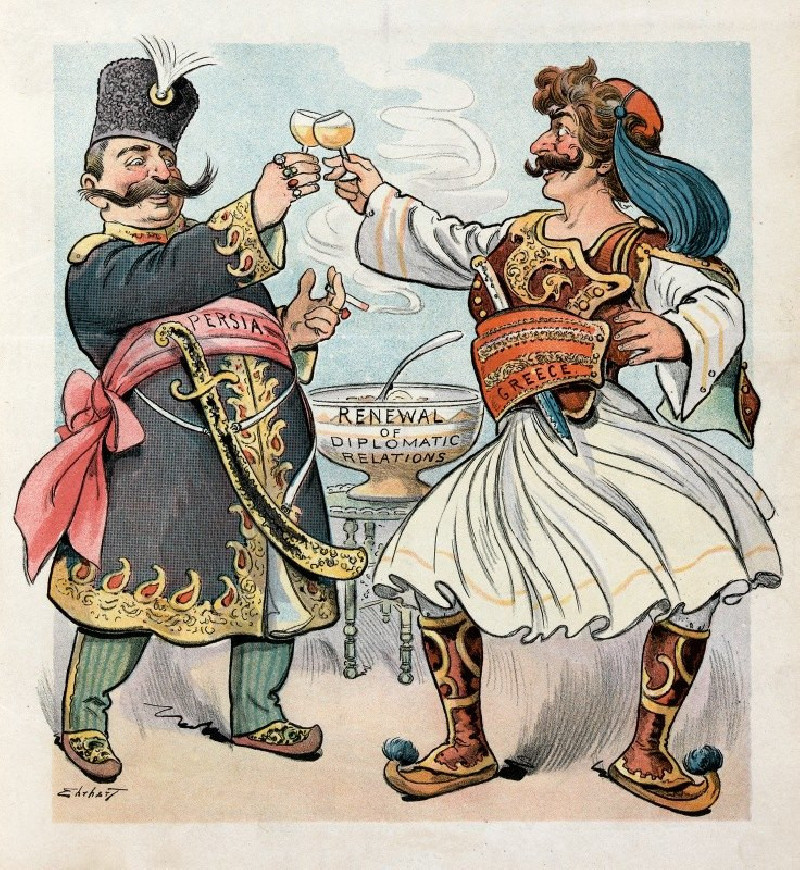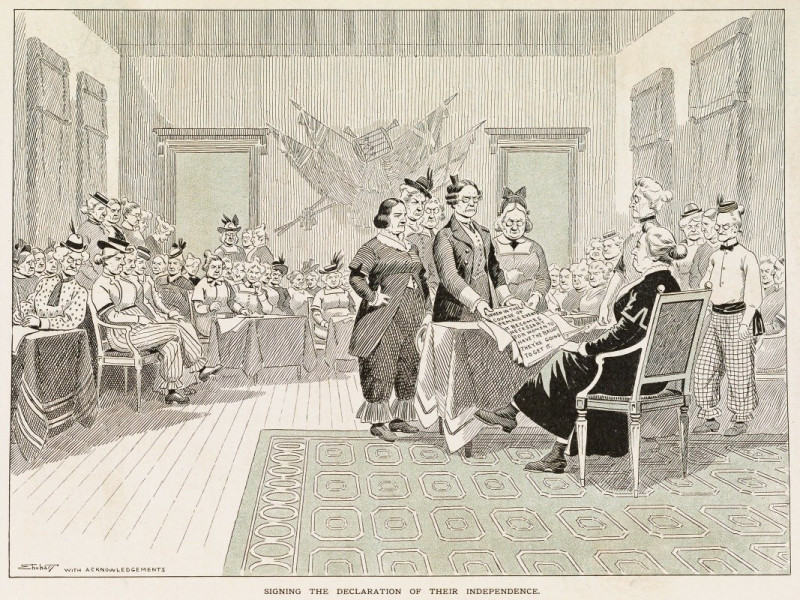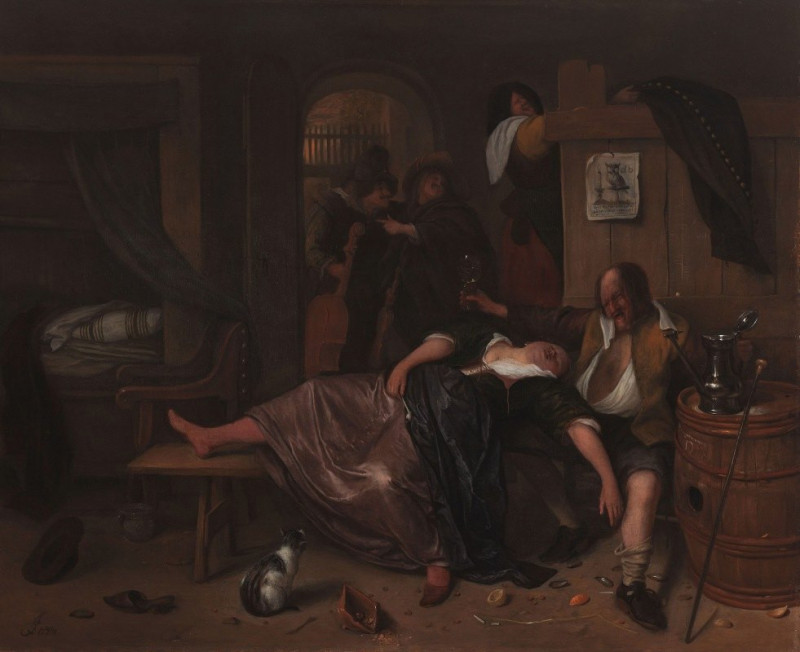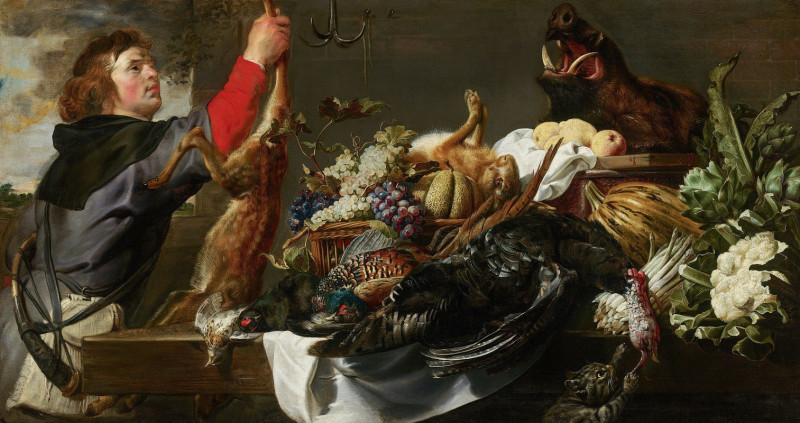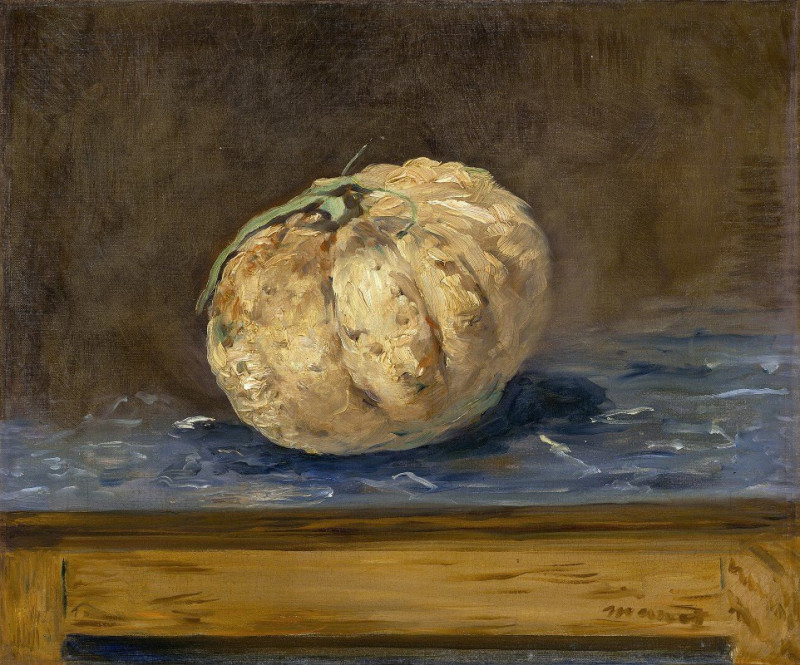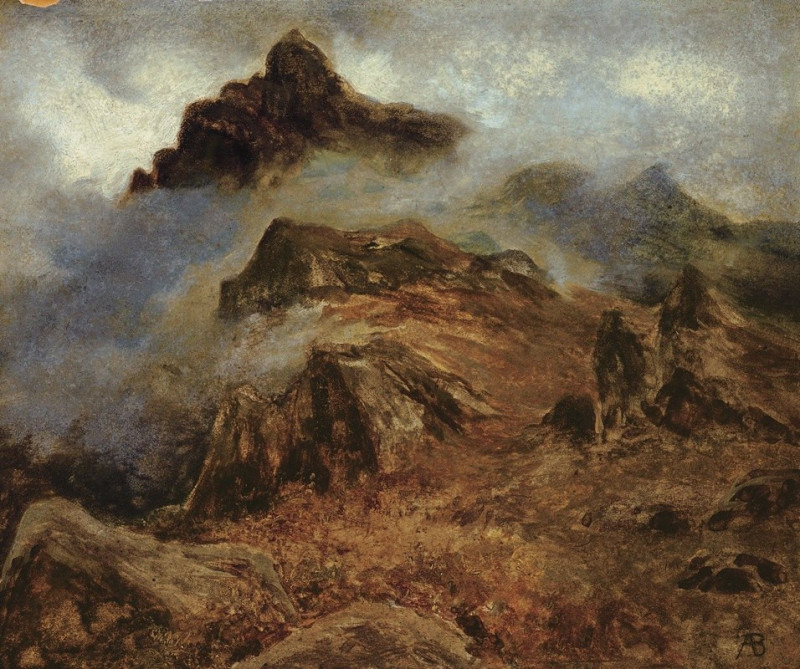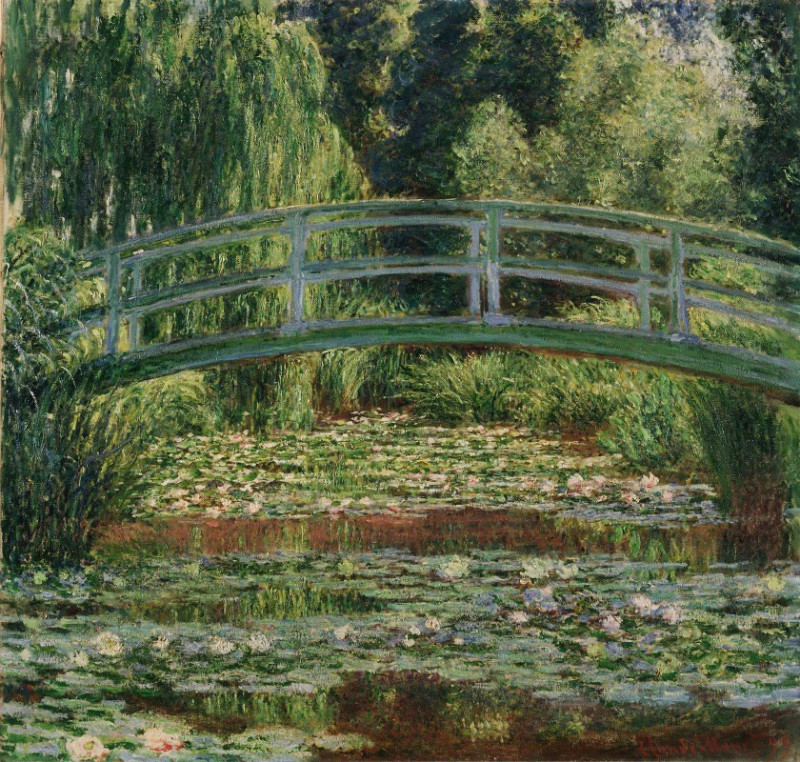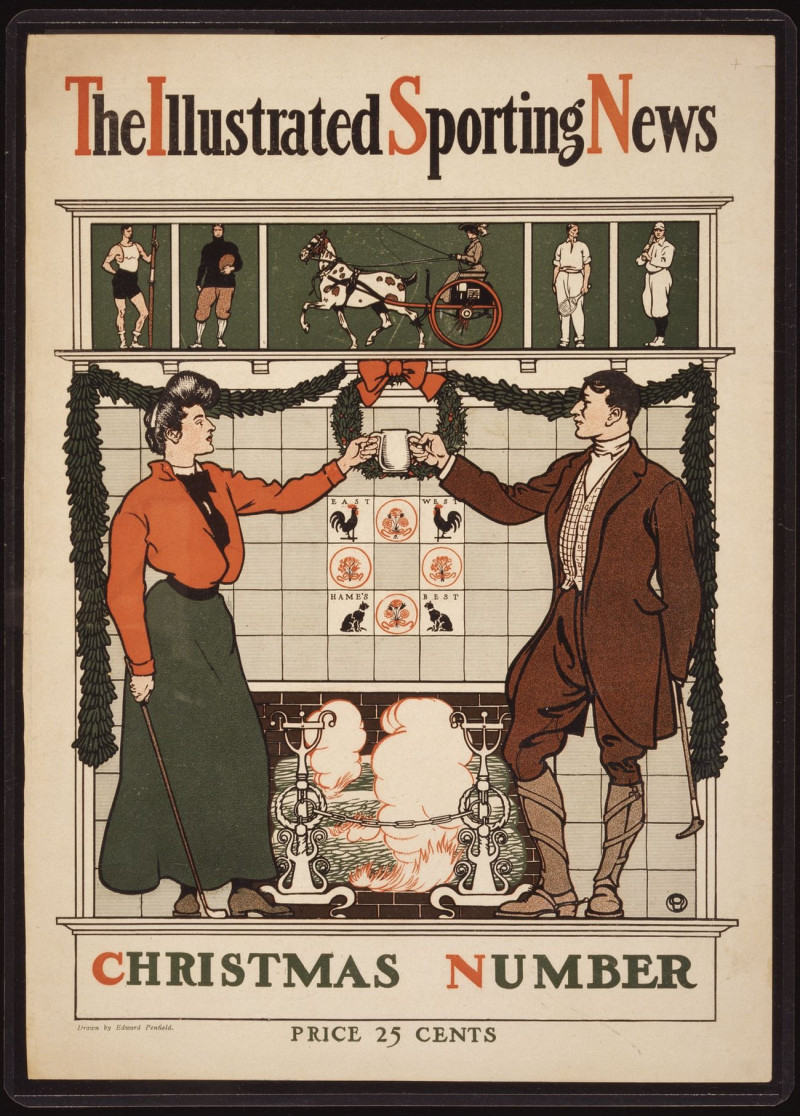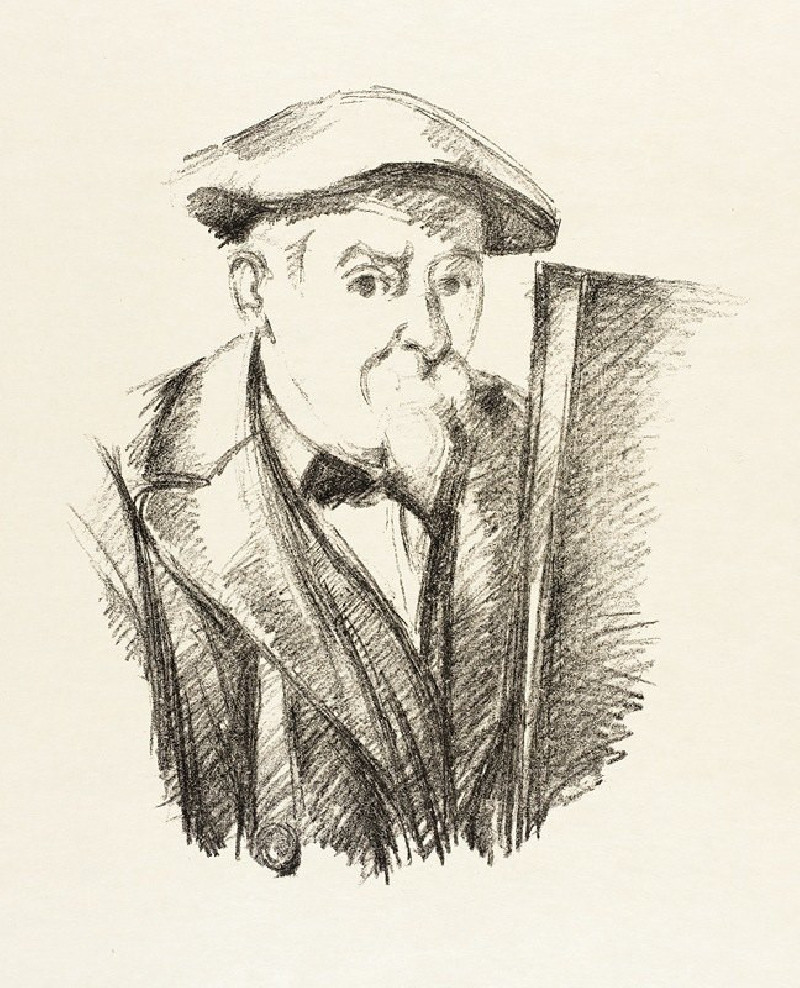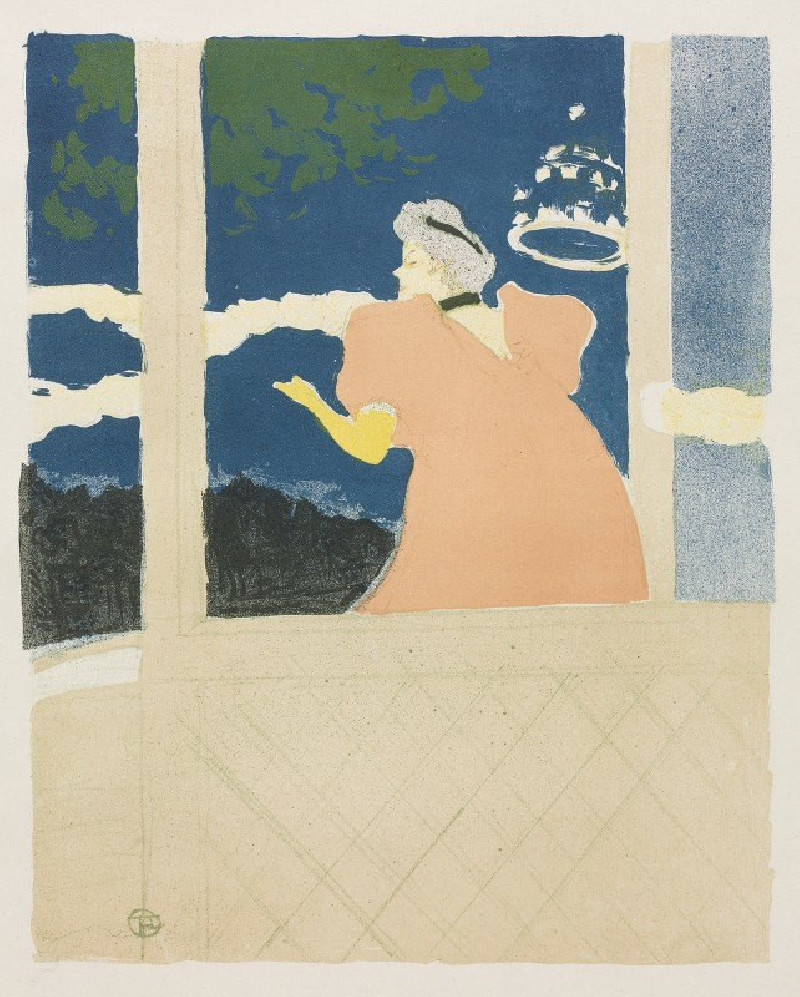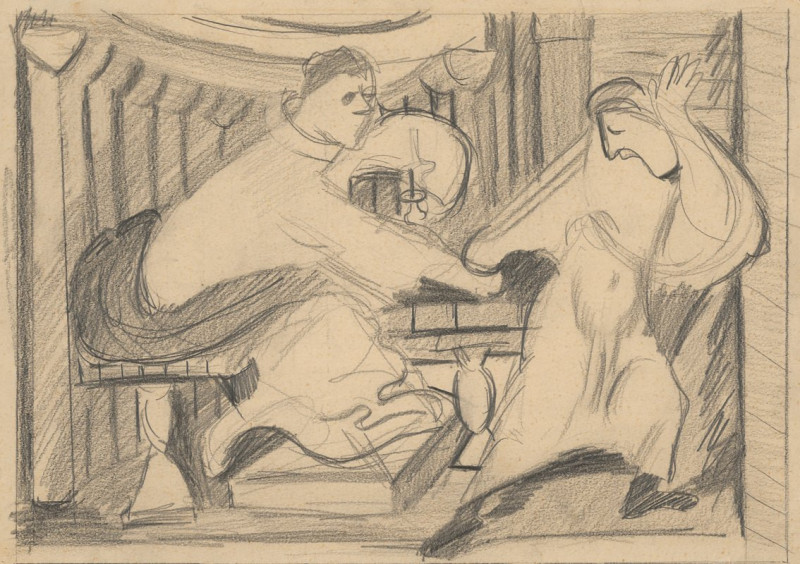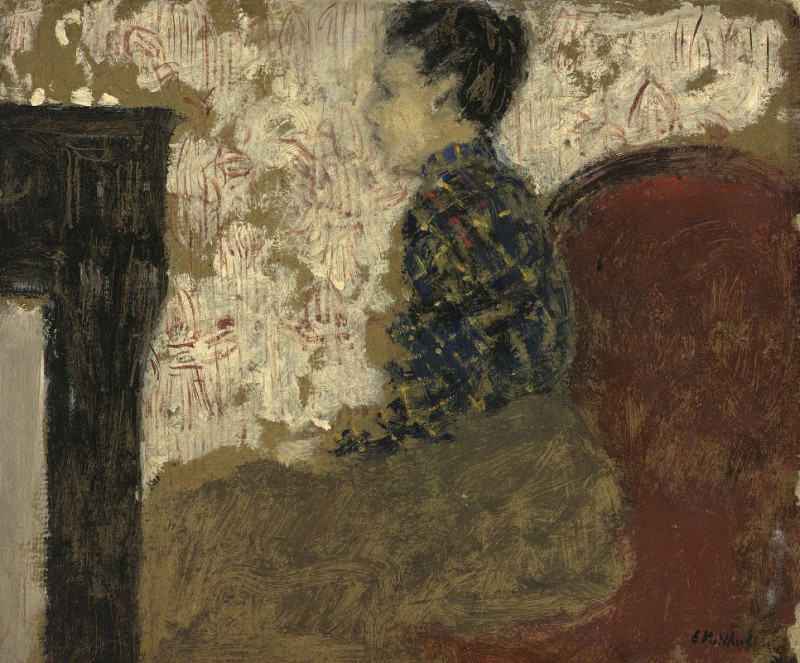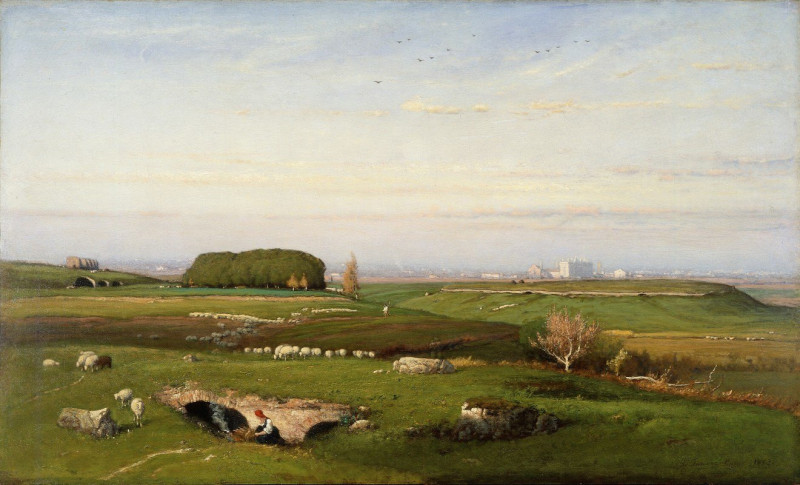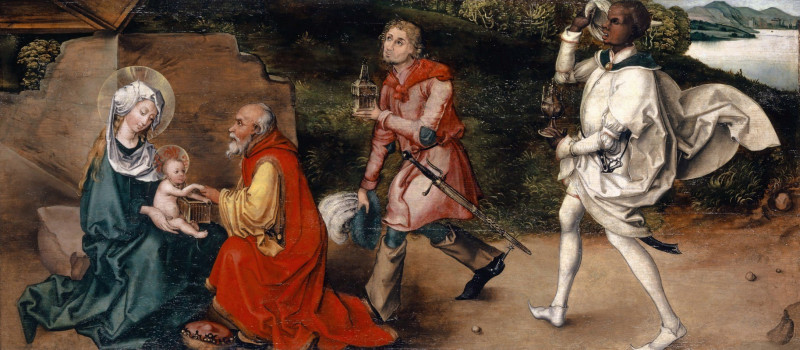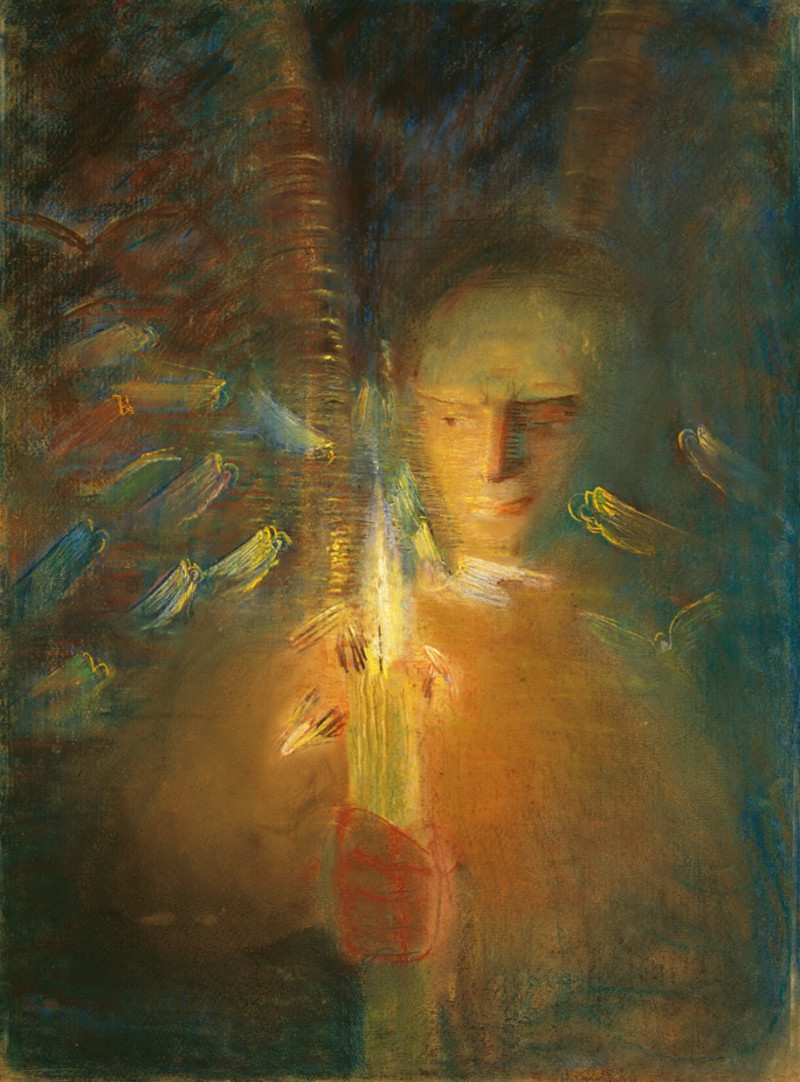A misunderstanding (1901)
Technique: Giclée quality print
Recommended by our customers
More about this artwork
"A Misunderstanding" by Samuel Ehrhart, created in 1901, captures a poignant and striking moment of historical contemplation, cleverly interwoven with allegory and satire. This vivid illustration reflects Ehrhart's sharp commentary on the geopolitical tensions of his time.The painting portrays two dramatically juxtaposed figures—an angelic woman and a ferocious lion clad in British attire. The angel, labeled "Peace" and marked with the text "South Africa" under her tiara, captures the essence of hope and diplomacy. She stands solemn and poised, with a worn expression, holding an olive branch—a timeless symbol of peace. In contrast, the lion, wearing a hat adorned with the British flag, presents a stark representation of British imperialism. With teeth bared and a hand on a large sword, he embodies the aggressive military stance of the era, particularly in the context of the South African Boer War.Set against a subtly rendered background hinting at a war-torn landscape, the interaction between these two figures illuminates the dramatic and often violent clash of warfare and diplomacy.
Delivery
Returns
American cartoonist and illustrator born in Pottsville, Pennsylvania, Ehrhart received his education in the New York City school system. Subsequently, he studied art in Munich. His work appeared in Harper's Monthly (1878-79), Puck (1880, and 1888-1913), and Judge (1887). He died in Brooklyn, New York on October 26, 1937.

